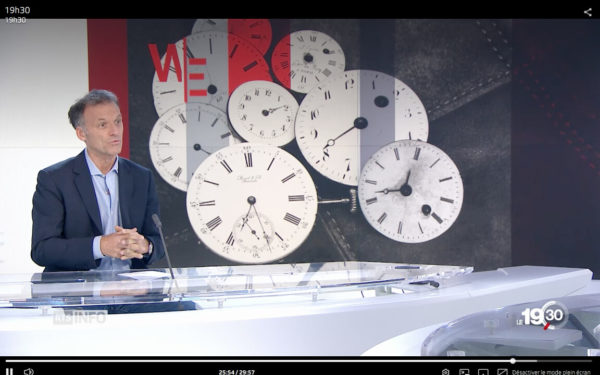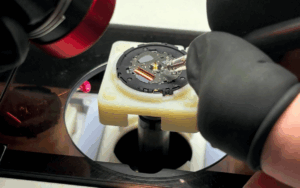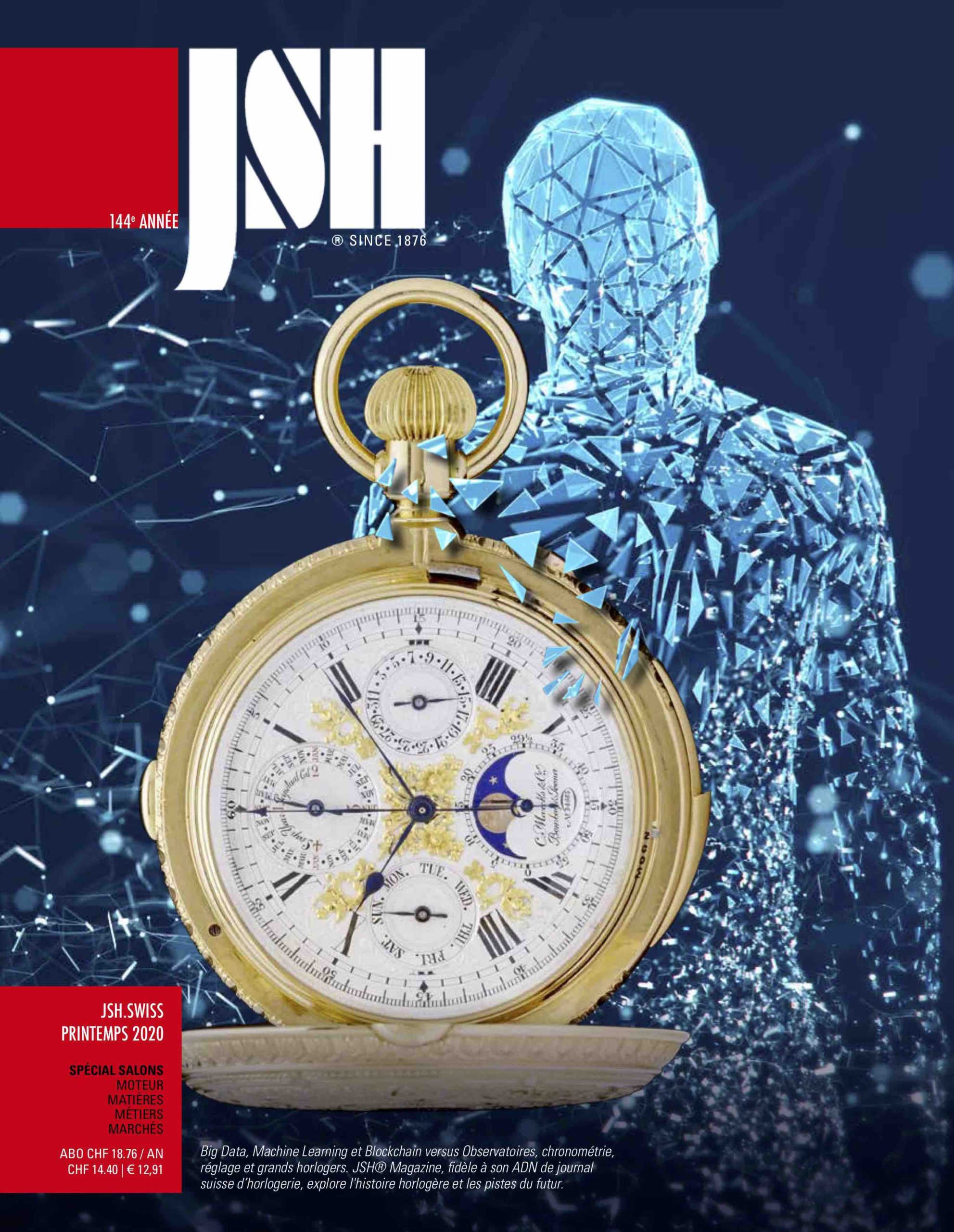Once upon a time, the time change! In 2017 we were even talking about a possible last time. The TV journalist Nicolas Rossé had challenged me on this topic, in connection with the archives of the Journal Suisse d’Horlogerie (JSH), the oldest Swiss watchmaking media. Replay.
By Joël A. Grandjean / JSH® Magazine (Since 1876)‘s Editor in Chief
Follow him on Linkedin – Facebook – Insta JSH – Insta SWP – Subscriptions JSH
As early as 1907, the oldest Swiss watchmaking magazine, the Journal Suisse d’Horlogerie (JSH), mentioned this noble idea of wanting to save energy by advancing or retreating by one hour, thus matching the decrease or increase in the length of the day.
A controversial change in Switzerland and not only
So, in 2017, journalist Nicolas Rossé, on behalf of the Swiss national television, produced a subject on what was perhaps the last changeover to winter time in history. And not only the last one in Swiss history, since Europe, in 2018, 40 years after its introduction in Switzerland in 1981, was going to look at the likely uselessness of such a measure, especially in view of the hassles it generates. This observation, a farmer with common sense in the upper reaches of the canton of Vaud in 1981, was already making with a touch of bitterness since, despite the “no” vote from the Swiss people three years earlier on the subject, the introduction of this measure had been forced through the entire country. “Switzerland cannot allow itself to be isolated in Europe,” said Pierre Aubert, Federal Councillor from Neuchâtel, in a TV appearance linked to the vote.
In JSH, an article from 1907
Under the title “The New British Time“, the journalist of the Journal Suisse d’Horlogerie (JSH), devoted an entire report in 1907 to the pamphlet published that year by a certain William Willet. In what he entitled “Waste of Daylight”, this Englishman presented his concept of changing the time of day in order to save energy. The JSH volume 32 describes this theory on three pages, not without humour. In the introduction: “It is agreed that the English people are practical to the highest degree.
Here, then, is a very British idea, for it will have the result of increasing the length of the days and of keeping the sun longer above the horizon, which is not to be despised in this country of fogs.”
We are in the middle of a cliché! And to continue, after having exposed the principle, to explain: “By this process of a childish simplicity, one will gain, during the months in question, each day 80 minutes of light on the hours of watch and 80 minutes of darkness on those of rest. Thus (…) the happy people will be called each year to benefit from 210 hours of solar light, compensated by 210 hours of night which it will devote to the sleep instead of lighting itself artificially.”
Unfortunately, this article only exists in French. It is quite colourful. Especially when the JSH journalist of that time mentioned the problem of this modified hour for the railroads: “Then, unlike the shareholders of the lighting companies, those of the insurance companies against the railway accidents will be well off,
because it is known that when accidents increase by 10 or 20%, the premiums increase by 20 or 40%. And for the undertakers, for the manufacturers of artificial limbs, what a good bargain”
Or when he writes, almost fatalistically: “…we fear that, even if we spend a lot of time on it, we will not be able to convince our readers of the ingenuity of the proposed system. You will see that in Switzerland, where we are not practical for a penny, we will simply continue to modify, according to the seasons, for schools, workshops and offices, the time of entry and exit of students and staff.”
Challenge to those who make watch complications
While preparing his subject for the evening news before what was perhaps the last changeover to winter time, Nicolas Rossé, as a true Jurassian and watchmaking curious, asked me if the JSH, the oldest watchmaking magazine in the world since it was created in 1876, had in its history talked about a watchmaking complication capable of technically responding to this backward and then forward movement of the time. Apparently, the journalist in 1907 was asking himself the same kind of questions. “Perhaps some researcher will suggest an even more practical solution than that of Mr. Willet and which would be very advantageous for our watch industry: it would consist in transforming our watches, clocks and clocks so that, as in the past with the Japanese, they would be adjusted as much as possible to the sunrise. (…) This would only be a game for our skilled complication constructors.”
Curiously, more than 100 years later, while doing my research, it is on a forum of the missing website horlogerie-suisse.com that I found expert builders debating about this possible feasibility. A discussion thread full of ideas and even sketches and computer-generated images. On the other hand, on the JSH side, no trace. However, I am convinced that a little more time dedicated to this research, or simply a call to the historians who read us, could change things.
Historical and poetic pearls: menstrual cycles and sunsets
However, I discovered, on the way, other historical treasures buried in this journal, which remains one of the greatest heritage treasures of Swiss watchmaking history. In 1949, an article talks about a gynocyclic clock (illustrated by JSH above), a complication able to indicate on a mechanical timepiece the menstrual cycles of women. Very elegant, very useful we wonder for whom, if we judge from the cartoons of the time.
More recently, and this time it’s just my memory that’ s reviving, I remember this exceptional poetry proposed by the “Everywhere” timepiece by Krayon, aka the watchmaker Rémi Maillat: a watch capable of indicating, at any place on the globe, the exact time of sunset.
Since Europe is wondering about the real usefulness of this measure, which some have already abandoned, despite the fact that the world’s markets might have been large enough for such a complication to find its public, it seems that the watchmaking complications will do without such a discovery. Unless in 109 years, which is exactly the time interval between this article and the one published in the JSH in 1907, a journalist will have fun coming back on this subject… We will then be in 2129!
The subject ”hour changing” on RTS, the national French-speaking Swiss television. Subject Nicolas Rossé, presented by Darius Rochebin. Interviewed, Joël A. Grandjean and the archives of the Journal Suisse d’Horlogerie.
On stage, Nicolas Rossé’s commentary after the broadcast of the subject. To be replayed.














